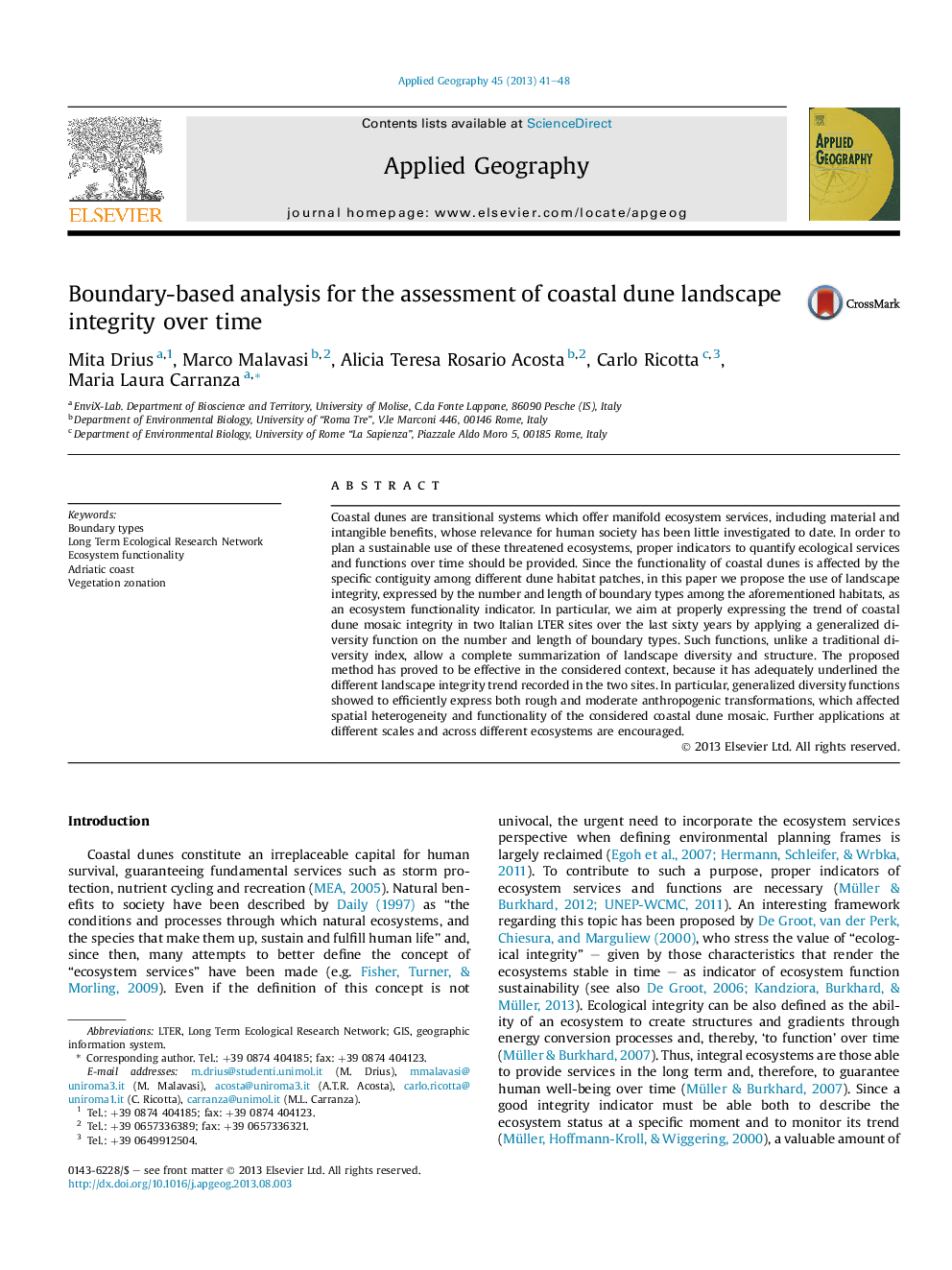| Article ID | Journal | Published Year | Pages | File Type |
|---|---|---|---|---|
| 6538779 | Applied Geography | 2013 | 8 Pages |
Abstract
Coastal dunes are transitional systems which offer manifold ecosystem services, including material and intangible benefits, whose relevance for human society has been little investigated to date. In order to plan a sustainable use of these threatened ecosystems, proper indicators to quantify ecological services and functions over time should be provided. Since the functionality of coastal dunes is affected by the specific contiguity among different dune habitat patches, in this paper we propose the use of landscape integrity, expressed by the number and length of boundary types among the aforementioned habitats, as an ecosystem functionality indicator. In particular, we aim at properly expressing the trend of coastal dune mosaic integrity in two Italian LTER sites over the last sixty years by applying a generalized diversity function on the number and length of boundary types. Such functions, unlike a traditional diversity index, allow a complete summarization of landscape diversity and structure. The proposed method has proved to be effective in the considered context, because it has adequately underlined the different landscape integrity trend recorded in the two sites. In particular, generalized diversity functions showed to efficiently express both rough and moderate anthropogenic transformations, which affected spatial heterogeneity and functionality of the considered coastal dune mosaic. Further applications at different scales and across different ecosystems are encouraged.
Related Topics
Life Sciences
Agricultural and Biological Sciences
Forestry
Authors
Mita Drius, Marco Malavasi, Alicia Teresa Rosario Acosta, Carlo Ricotta, Maria Laura Carranza,
